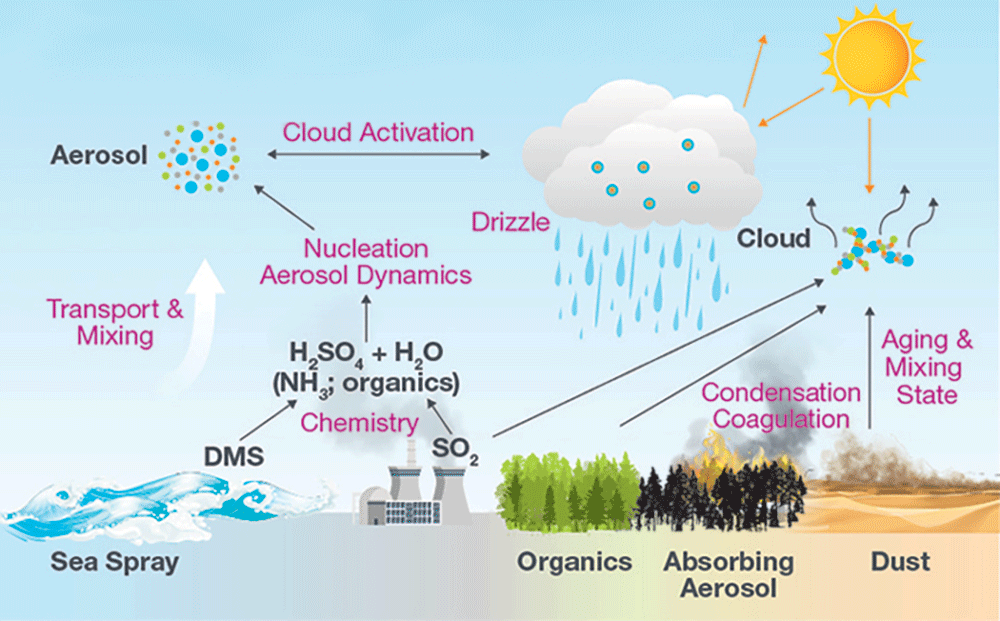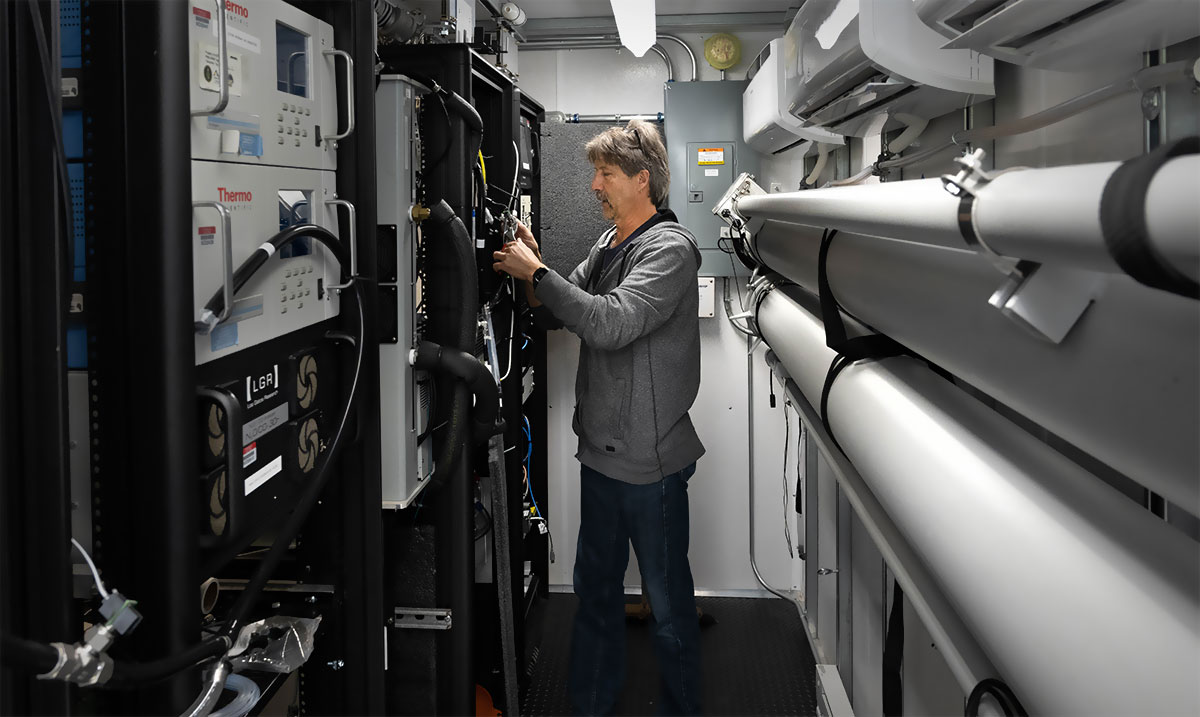Aerosol Processes and Measurement
The Aerosol Processes and Measurement Group investigates aerosols—populations of small particles in the atmosphere that form clouds, scatter light, and affect human health—and atmospheric gases. We investigate, measure, and model the properties of aerosols and the processes in which they participate by performing laboratory studies, modeling and theoretical analyses, and field measurements. We lead in the development of new tools for aerosol measurement, in laboratory and field, and novel approaches to aerosol simulation.
This work provides better process-level understanding of aerosol formation and evolution mechanisms, aerosol chemical composition, aerosol light absorption, and the direct and indirect influences of aerosols on clouds, precipitation, and climate, as well as data that are used in global climate models.
Research Goals
Our immediate goal is to close gaps in our understanding of aerosol lifecycle and to incorporate the new knowledge into models in a way that promotes computation efficiency and reduction of model uncertainty. Our longer-range goal is to improve scientific understanding and quantification of aerosol effects important to regional and global climate.

Aerosol lifecycle processes research and climate.
Atmospheric Radiation Measurement (ARM) program
The group provides measurement capabilities to the DOE Atmospheric Radiation Measurement (ARM) program for long-term measurements of aerosols and their precursors at a variety of locations around the globe. Scientists in this group participate in field and laboratory studies and act as Mentors for ARM instruments, and they are responsible for providing scientific expertise on the operation and deployment of the instruments, including repair, calibration, remote monitoring of instrument operation, establishment of operating conditions, data reduction, and quality control.
ARM Aerosol Observing Systems (AOS)
The group designs and builds ARM Aerosol Observing Systems (AOSs) — 20-foot cargo containers that integrate suites of instruments into a single unit that can be deployed anywhere in the world. These mobile laboratories are self-contained, requiring only power and internet service. They are equipped with an array of instrumentation for characterizing aerosol number concentration, size distribution, optical properties, hygroscopicity, cloud-forming ability, and supporting measurements.
The instruments are permanently installed in shock-mounted racks for ease of transportation and in-field set up. The containers are climate controlled and have been deployed during extended (1-1½ year) field campaigns in Antarctica, on an ice-breaker in the Arctic, in the Amazon, in the mountains in Colorado, and numerous other locations, continuing ARM’s record of making measurements in some of the harshest environments on Earth. The group currently provides on-site and remote support for five AOS systems.

Inside an AOS unit designed and built by Brookhaven Lab staff for the ARM Facility.
Capabilities
- Measurement and modeling of aerosol formation processes, both direct and indirect, including nucleation and new particle formation
- Measurement and modeling of light scattering and absorption by aerosols
- Measurement of aerosol chemical composition
- Measurement of aerosol hygroscopicity and cloud drop activation potential
- Expertise in measurement of biomass-burning and black-carbon aerosols and their interpretation
- Aerosol evolution and chemical processing
- Expertise in aerosol measurement in both laboratory and field conditions
- Expertise in instrument design and fabrication
- Expertise in design, fabrication, and operation of a suite of aerosol instruments operating together
- Expertise in aerosol instrument calibration
- Development of efficient aerosol modeling approaches
- Next-generation instrument development and network design
- Scientific support for field operations
-

Art Sedlacek
Interim Department Chair
Environmental and Climate Sciences Department
(631) 344-2404, sedlacek@bnl.gov




